Tracking and analyzing the Shopify Plus store’s performance is crucial to understanding customer behavior, optimizing marketing strategies, and ultimately increasing sales. When integrated with Google Analytics and Tag Manager, the Shopify Plus store is a powerful tool that can provide detailed insights into its performance. This guide will walk you through the steps to incorporate these tools, ensuring you make the most of their capabilities.
For more details on setting up the Shopify Plus store, check out our blog, Shopify Plus Store Development Guide: A Step-by-Step Approach for 2025.
What is Google Analytics?
Google Analytics is a powerful web analytics tool that allows users to track and report website traffic. Google Analytics helps to gain insights into the visitor’s demographics, the devices they use, the sources of the traffic, and how visitors navigate through the site. This data is invaluable for optimizing the store’s performance, improving user experience, and driving conversions.
Key features of Google Analytics include:
Audience Insights: Understand who the visitors are, including their age, gender, location, and interests.
Acquisition Reports: See where the traffic is coming from organic search, paid ads, social media, or referral sites.
Behavior Analysis: Track how visitors interact with the site, including which pages they visit, how long they stay, and their exit points.
Conversion Tracking: Monitor the effectiveness of the sales funnel, from initial visit to final purchase.
What is Google Tag Manager?
Google Tag Manager (GTM) is a free tag management system that allows users to easily update and manage tags (small snippets of code) on their website or mobile app without editing the code directly. Tags are used for various purposes, such as tracking conversions, monitoring site analytics, and remarketing.
Key features of Google Tag Manager include:
Simplified Tag Management: GTM allows users to manage multiple tags from a single interface, reducing the complexity of the website’s code.
Event Tracking: Track specific actions users take on the site, such as clicks on a button, form submissions, or video plays.
Version Control: GTM has the record of all changes made to the tags, allowing users to revert to previous versions if needed.
Built-In Debugging Tools: GTM’s preview mode lets users test the tags before publishing, ensuring everything works as expected.
Also Read
Step-by-Step Guide to Integrate Google Analytics in Shopify Plus
Before getting into the integration process, ensure to have the following:
- A Google Analytics account.
- A Google Tag Manager account.
- Access to the Shopify Plus store’s admin panel.
Method 1:
In this method, Google Analytics is integrated using an app in Shopify Plus. While it was previously done by manually adding code, the process is now simplified.
Step 1: Accessing Shopify Admin
Log in to the Shopify Plus store and navigate to the ‘Online Store’ section from the Shopify admin panel.
Step 2: Adding Google Analytics Tracking ID
- In your Shopify admin, go to ‘Preferences’ under the ‘Online Store’.
- Scroll down to the ‘Google Analytics’ section.

- Click on the Set up Google button then install the Google and YouTube app if it is not installed before.
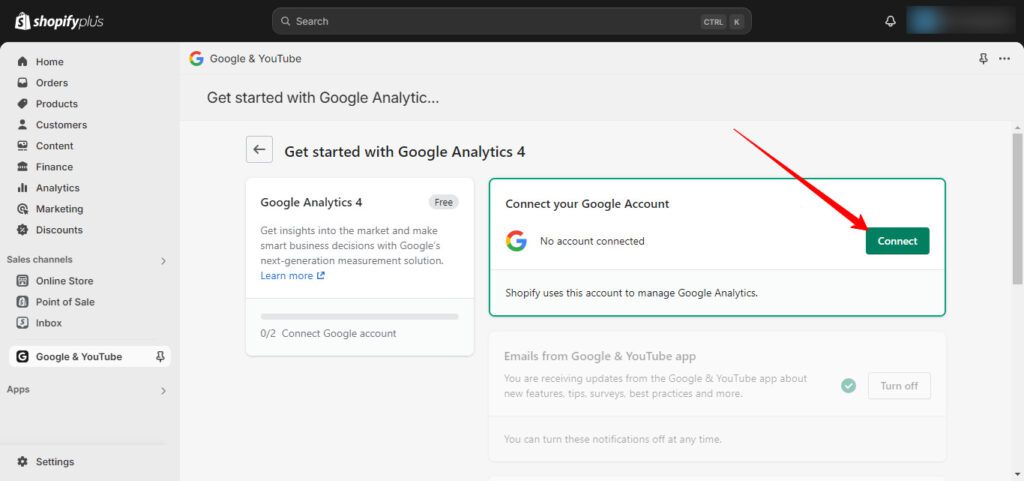
- Click the connect button, and a popup will appear then select the email account that contains the Google Analytics account.
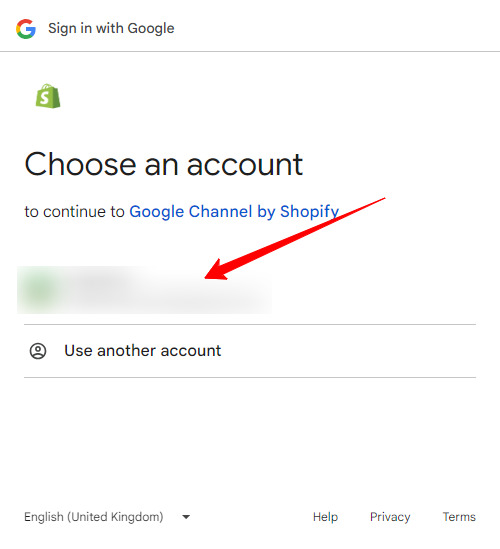

- That’s it the google analytics account is now connected with Shopify.
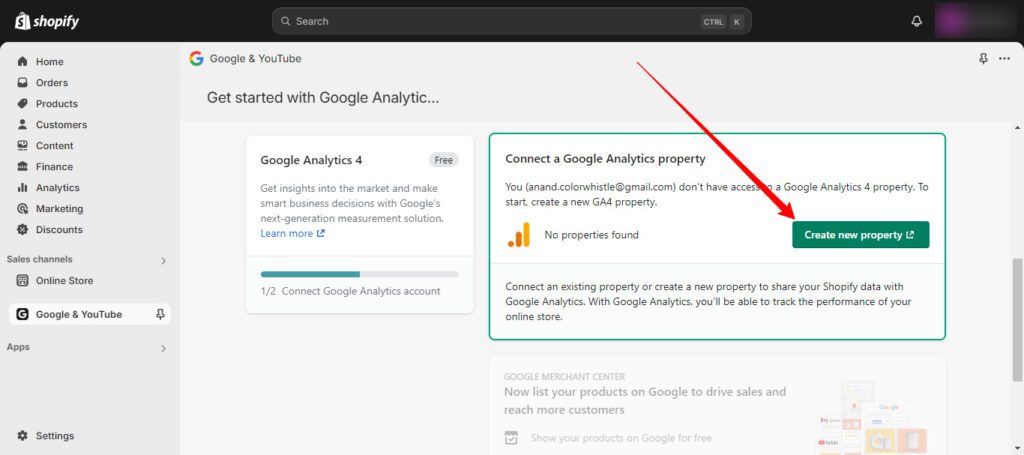
- Create a new property in ‘Google Analytics Account’ if it is not created in Google Analytics.
Step 3: Enabling Enhanced eCommerce Tracking
- Ensure the ‘Use Enhanced eCommerce’ option is checked in the same ‘Google Analytics’ section of the Shopify admin.
- In the Google Analytics account, navigate to Admin > View Settings.
- Scroll to the ‘Ecommerce Settings’ and toggle the ‘Enable Enhanced Ecommerce Reporting’ switch on.
- Click ‘Save’.
This ensures that Shopify sends detailed transaction and product data to Google Analytics, allowing users to track performance more effectively.
Method 2:
The second method involves integrating Google Analytics via Google Tag Manager (GTM). This approach allows us to manage and deploy all types of tracking tags in a single location. By using Google Tag Manager, we gain greater flexibility and control over all analytics and tracking tags from one platform.
Why Use Google Analytics and Google Tag Manager Together?
Using Google Analytics with Google Tag Manager provides a powerful combination of data tracking and tag management. GTM simplifies the process of adding and managing tracking codes on the site, while Google Analytics collects and analyzes the data generated by these codes. Together, they offer a solution for tracking user behavior and optimizing the Shopify Plus store.
Step 1: Setting Up Google Tag Manager in Shopify
- In the Google Tag Manager account, create a new container for the Shopify Plus store.
- Copy the container code snippets (found under Admin > Install Google Tag Manager).
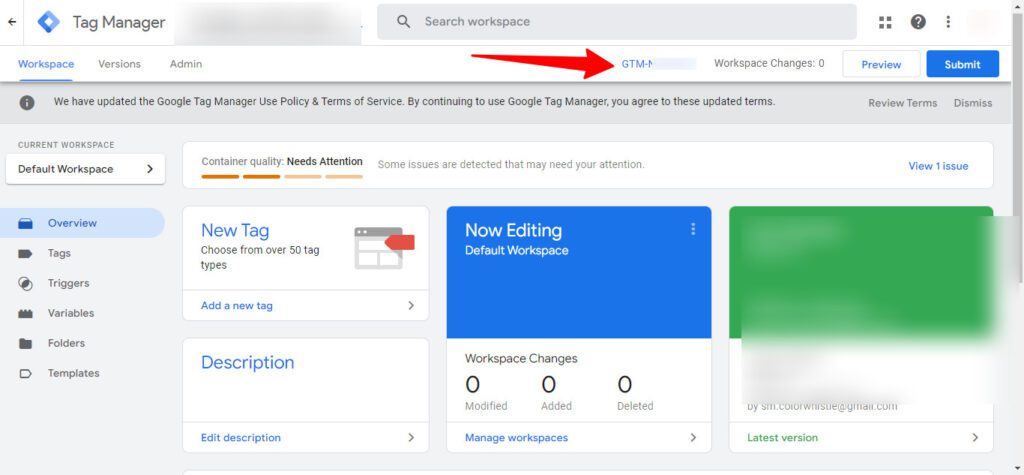
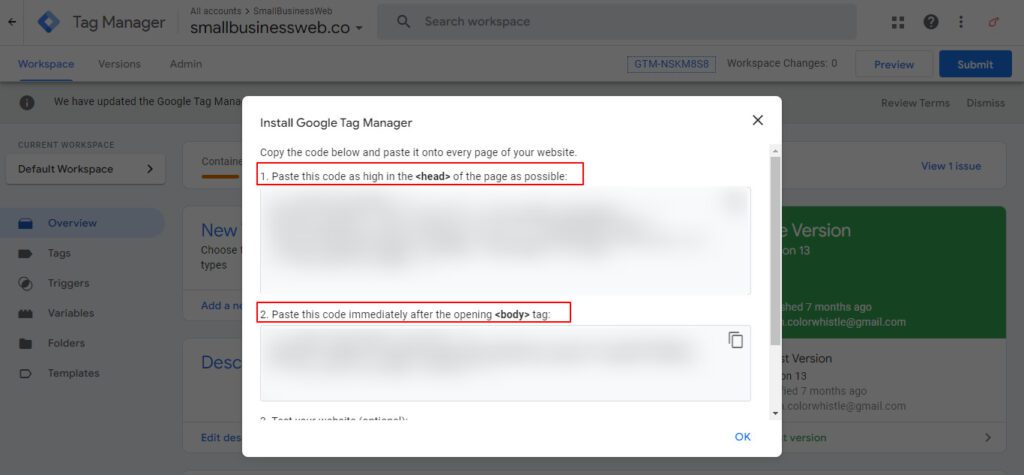
- In Shopify, go to ‘Themes’ under the ‘Online Store’ section and click on ‘Actions > Edit Code’.
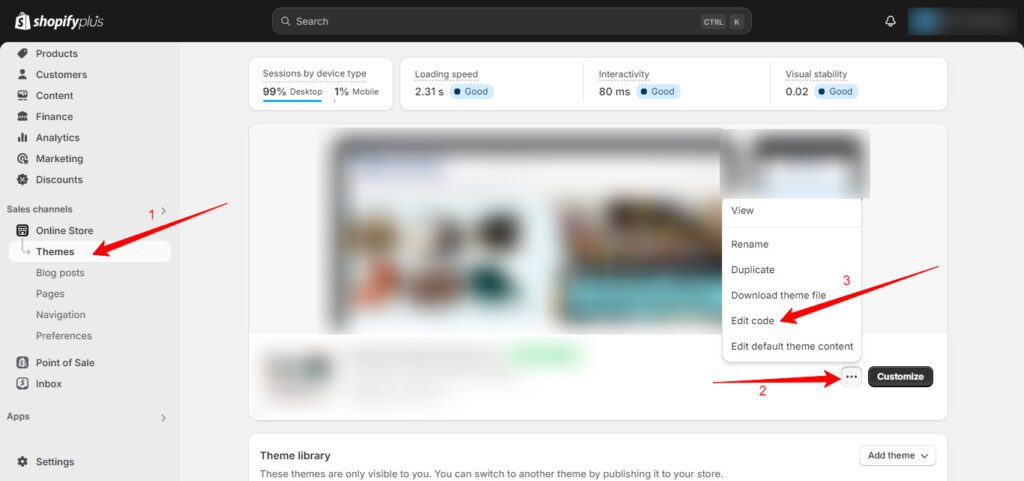
- Locate the theme. liquid file under the Layout section and paste the first snippet immediately after the opening <head> tag and the second snippet immediately after the opening <body> tag.


- Click ‘Save’ to apply the changes.
Step 2: Configuring Tags, Triggers, and Variables
- Return to Google Tag Manager and click ‘Add a new tag’.

- Name the tag

- Select ‘Google Tag’ as the tag type.

- Enter the Tag ID.

- Set the tag to track ‘Pageviews’ and configure it to use the Google Analytics Tracking ID. To know the tag id. Go to Google Analytics > admin > data streams > select your stream you want to track >>> then copy “measurement id”
- Add a trigger (e.g., ‘All Pages’) to ensure the tag fires on every page.
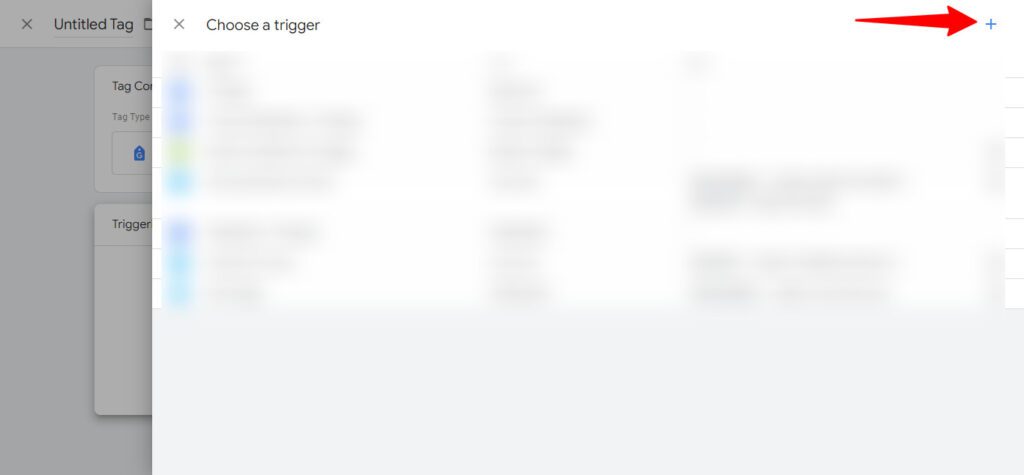
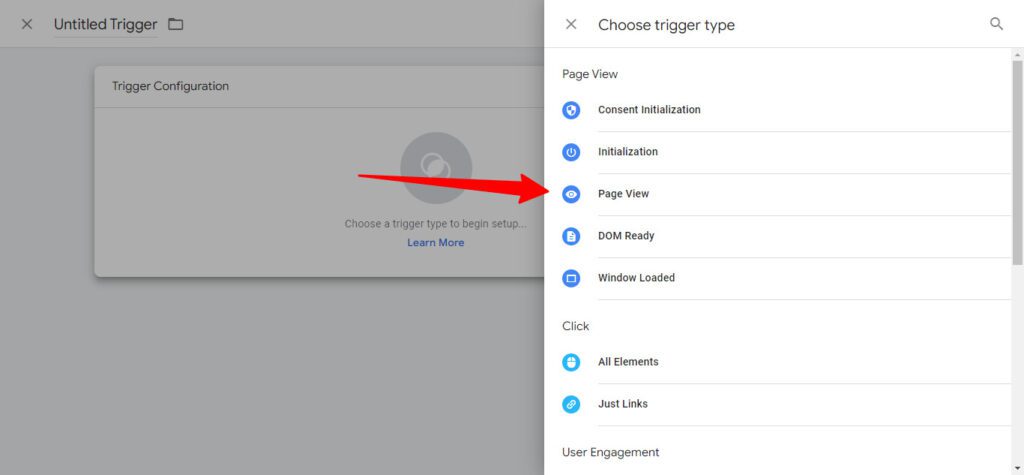

- Click ‘Save’.
Step 3: Testing and Debugging
- Use Google Tag Manager’s Preview mode to test the setup before publishing. This allows users to see which tags are firing and when.
- Ensure everything is functioning correctly by navigating through the Shopify store while in Preview mode.
- Once confirmed, click ‘Submit’ in Google Tag Manager to publish the changes.
Verifying the Integration
Using Google Tag Assistant
Install the Google Tag Assistant Chrome extension to verify that the Google Analytics and Google Tag Manager implementations are working correctly. The extension will show which tags are firing on each page and highlight any issues.
Google Analytics Real-Time Reports
In Google Analytics, go to Real-Time > Overview to see if data is recorded in real time. This confirms that the integration is successful and tracking correctly.
Also read
Best Practices for Using Google Analytics and Google Tag Manager with Shopify Plus
- Regularly Monitor Data: Check the Google Analytics data frequently to spot trends and optimize marketing strategies.
- Keep Tags Organized: In Google Tag Manager, organize tags by naming them clearly and categorizing them based on their purpose.
- Utilize Shopify Plus Features: Shopify Plus offers advanced features like custom scripts, which can be integrated with Google Tag Manager for enhanced functionality.
Troubleshooting Common Issues
- No Data Being Tracked: If no data is being tracked, ensure that the Google Analytics Tracking ID is correctly entered in Shopify and that Google Tag Manager snippets are properly placed in the theme .liquid file.
- Duplicate Tracking: If there is any duplicate tracking in Google Analytics, check for multiple instances of the Google Analytics Tracking ID or redundant tags in Google Tag Manager.
Wrapping up
Integrating Google Analytics and Google Tag Manager into the Shopify Plus store is an essential step in maximizing the store’s performance. With accurate tracking and data management, you can make data-driven decisions that enhance the customer’s experience and boost your sales.
At ColorWhistle, we specialize in e-commerce development services, helping businesses like yours seamlessly integrate powerful tools such as Google Analytics and Google Tag Manager. Contact us at +1 (919) 234-5140 to explore how we can take your Shopify experience to the next level.
What’s Next?
Now that you’ve had the chance to explore our blog, it’s time to take the next step and see what opportunities await!

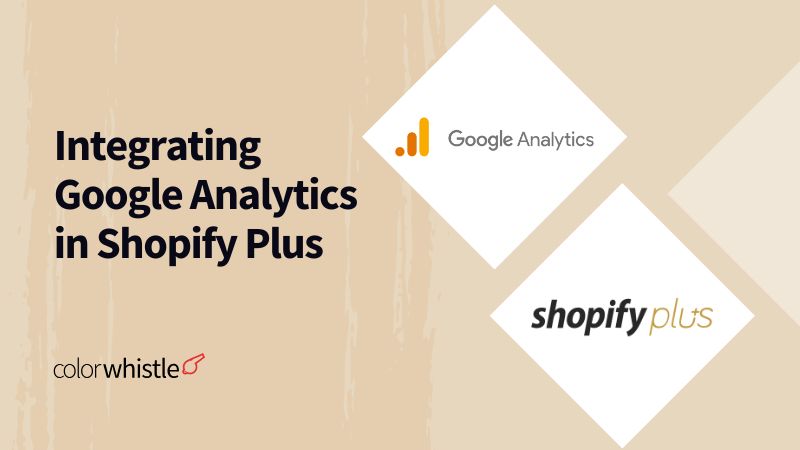




Thanks for sharing these tips! Choosing the right designer is crucial for a successful app launch, just as ghost mannequin photography is essential for presenting a product clearly and attractively. It’s all about focusing on the essentials!